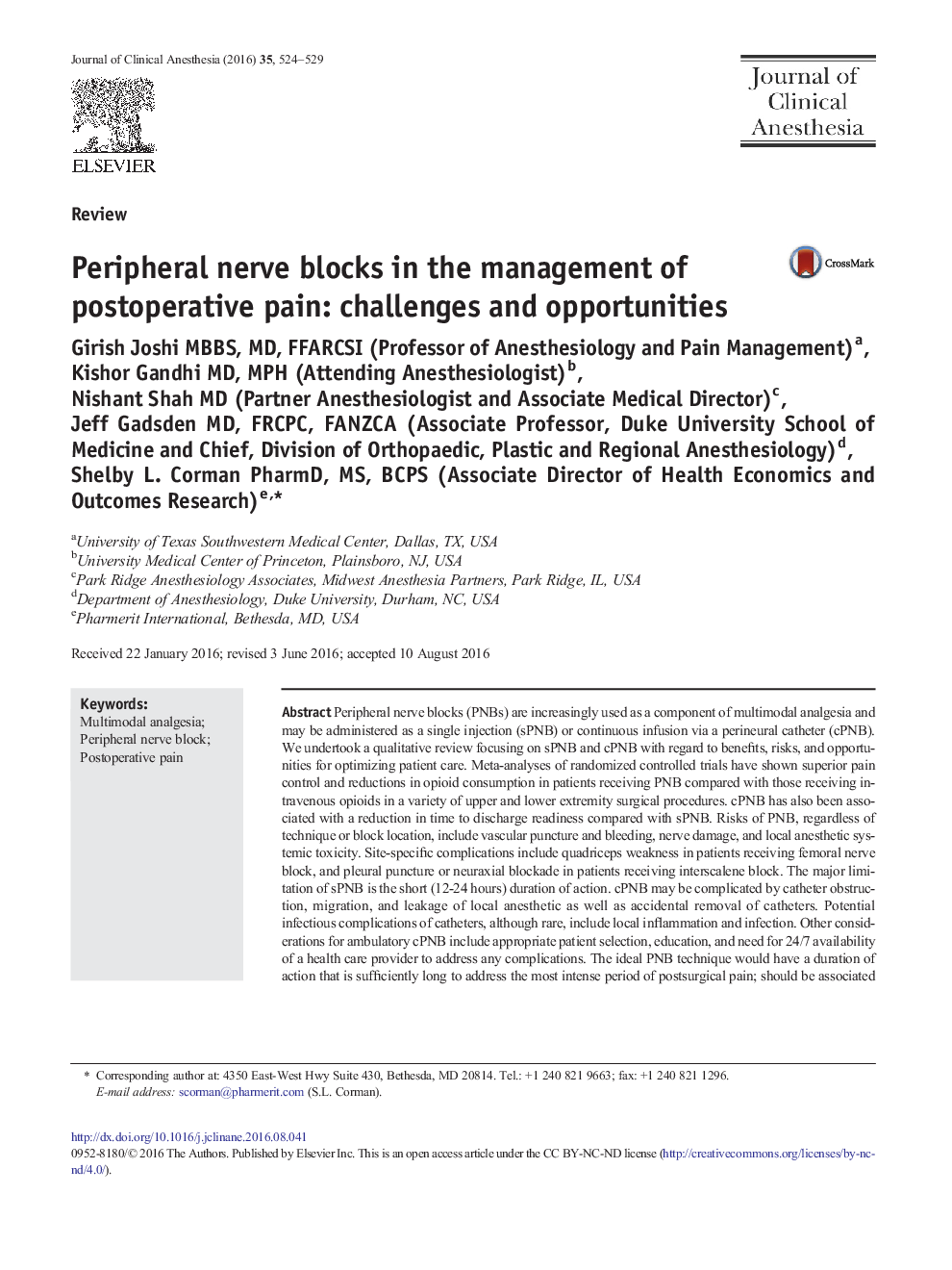| کد مقاله | کد نشریه | سال انتشار | مقاله انگلیسی | نسخه تمام متن |
|---|---|---|---|---|
| 5884459 | 1567655 | 2016 | 6 صفحه PDF | دانلود رایگان |
عنوان انگلیسی مقاله ISI
Peripheral nerve blocks in the management of postoperative pain: challenges and opportunities
ترجمه فارسی عنوان
بلوک های عصبی محیطی در مدیریت درد پس از عمل: چالش ها و فرصت ها
دانلود مقاله + سفارش ترجمه
دانلود مقاله ISI انگلیسی
رایگان برای ایرانیان
کلمات کلیدی
مقاربت چند دارویی، بلوک عصبی محیطی، درد پس از عمل،
موضوعات مرتبط
علوم پزشکی و سلامت
پزشکی و دندانپزشکی
بیهوشی و پزشکی درد
چکیده انگلیسی
Peripheral nerve blocks (PNBs) are increasingly used as a component of multimodal analgesia and may be administered as a single injection (sPNB) or continuous infusion via a perineural catheter (cPNB). We undertook a qualitative review focusing on sPNB and cPNB with regard to benefits, risks, and opportunities for optimizing patient care. Meta-analyses of randomized controlled trials have shown superior pain control and reductions in opioid consumption in patients receiving PNB compared with those receiving intravenous opioids in a variety of upper and lower extremity surgical procedures. cPNB has also been associated with a reduction in time to discharge readiness compared with sPNB. Risks of PNB, regardless of technique or block location, include vascular puncture and bleeding, nerve damage, and local anesthetic systemic toxicity. Site-specific complications include quadriceps weakness in patients receiving femoral nerve block, and pleural puncture or neuraxial blockade in patients receiving interscalene block. The major limitation of sPNB is the short (12-24 hours) duration of action. cPNB may be complicated by catheter obstruction, migration, and leakage of local anesthetic as well as accidental removal of catheters. Potential infectious complications of catheters, although rare, include local inflammation and infection. Other considerations for ambulatory cPNB include appropriate patient selection, education, and need for 24/7 availability of a health care provider to address any complications. The ideal PNB technique would have a duration of action that is sufficiently long to address the most intense period of postsurgical pain; should be associated with minimal risk of infection, neurologic complications, bleeding, and local anesthetic systemic toxicity; and should be easy to perform, convenient for patients, and easy to manage in the postoperative period.
ناشر
Database: Elsevier - ScienceDirect (ساینس دایرکت)
Journal: Journal of Clinical Anesthesia - Volume 35, December 2016, Pages 524-529
Journal: Journal of Clinical Anesthesia - Volume 35, December 2016, Pages 524-529
نویسندگان
Girish (Professor of Anesthesiology and Pain Management), Kishor (Attending Anesthesiologist), Nishant (Partner Anesthesiologist and Associate Medical Director), Jeff (Associate Professor, Duke University School of Medicine and Chief,
